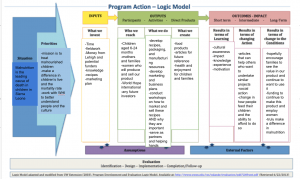Last week, we had our first presentation. We focused on our recipe design process and why we have made certain decisions throughout the semester and got pretty good feedback. In general, I think we should structure our next presentation a little differently. I think we expected different questions and had different back-up slides that we prepared for questions we were expecting. Because we have just finished each of our recipes, we haven’t been able to build a cost or business model, and that’s what a lot of the judges asked about. In order to improve our next presentation, we need to calculate an approximate cost of our products based on the numbers we received from Allieu and Jawara. We also need to identify a marketing plan for the products, and it will differ for each of them. Many of the judges were concerned about how Maggi cubes are different from our bouillon cube and whether people in Sierra Leone would use our product. Lastly, in terms of content, we also need to begin to work on a business model of who will create the product and where they will create it. We won’t know a lot of this information yet, but it’s worth working on until then. In terms of the presentation itself, we hope to better organized our transitions to better use our time. A seven minute presentation is very short, so we need to use our time wisely. I also really liked how some groups organized their last slides to have links to other topics or slides. Finally, I think our group needed to better organize our questions and who answered them.
Our group definitely will need IRB approval for when we feed our product to children. The product will be fortified with nutrients and ingredients that are designed to help the child, but too many vitamins and minerals can hurt people. Side effects of too much vitamin A are vision problems and clumsiness. Side effects of iron, iodine, and zinc overdose are upset stomach, nausea, and vomiting. We need to ensure that our product will not do this to children, especially if used correctly. We also need to be sure that it truly works to treat malnutrition. In a developing country like Sierra Leone, it may be difficult for us to get accurate reporting of how children are doing after they eat our products. Groups in other countries who have undertaken similar projects haven’t been able to report much quantitative data about the health of children after eating products that treat micronutrient deficiencies. Instead, mothers report their children’s health, weight, and appearance to people who work as community health workers or in clinics. Many times, the main issue is that mothers stop feeding their children the product or stop reporting the data. In order to get IRB approval, it is important for us to present the nutrient content of our recipes, how they are supposed to be consumed, how we will explain their nutrient composition, and how families can report any issues with the product. 
